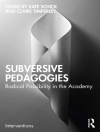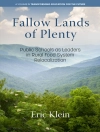‘The text is an incredible composite of the literature that has shaped correctional practice. The authors have a great capacity for making research interesting and accessible. Cullen and Jonson have accomplished their goal of motivating readers to become sophisticated consumers of correctional knowledge.’
—Betsy Matthews, Eastern Kentucky University
The Second Edition of Correctional Theory: Context and Consequences continues to identify and evaluate the major competing theories used to guide the goals, policies, and practices of the correctional system. Authors Francis T. Cullen and Cheryl Lero Jonson demonstrate that changes in theories can legitimize new ways of treating and punishing offenders, and they help readers understand how transformations in the social and political context of U.S. society impact correctional theory and policy. Designed to motivate readers to become sophisticated consumers of correctional information, the book emphasizes the importance of using evidence-based information to guide decisions, rather than relying on nonscientific commonsense or ideology-based beliefs.
表中的内容
Preface
PART I. Crisis in American Corrections
CHAPTER 1. From Theory to Policy: Evidence-Based Corrections
Theories of Corrections
Six Theories in Brief
Utility, Opinion, and Evidence
Evidence-Based Corrections
Conclusion: What’s Ahead?
CHAPTER 2. Correctional Theory in Crisis: America’s Changing Context
What Is Rehabilitation?
The Rise of the Rehabilitative Ideal
Attacking Rehabilitation
The “Nothing Works” Doctrine: Martinson and Beyond
Conclusion: Crisis in Correctional Theory
PART II. The Punishment Response
CHAPTER 3. Just Deserts: Doing Justice or Getting Tough?
The Concepts of Retribution and Just Deserts: Punishing the Crime
Retribution: Just and Painful
Four Problems for Retribution
The Justice Model: Restraining State Discretion
What Went Wrong? Winning the Battle but Losing the War
Conclusion: The Need for Crime Control
CHAPTER 4. Deterrence: Scaring Offenders Straight
The Concept of Deterrence
Is Deterrence a “Conservative” Theory?
The Theoretical Assumptions of Deterrence
Studying Whether Deterrence Works: Assessing Types of Evidence
Policy Changes That Increase Punishment
Macro-Level Studies of Punishment and Crime Rates
Perceptual Deterrence Studies
Deterrence in the Community
The Effects of Imprisonment
Conclusion: The Limits of Deterrence
CHAPTER 5. Incapacitation: Locking Up the Wicked
Too Many Prisoners
More Than Enough Criminals
The Concept of Incapacitation
Estimating the Incapacitation Effect: Studying Individual Offenders
Estimating the Incapacitation Effect: Macro-Level Studies
Conclusion: Compared to What?
PART III. The Social Welfare Response
CHAPTER 6. Restorative Justice: Reintegrative Shaming
The Concept of Restorative Justice
The Appeal of Restorative Justice
Three Problems
Does Restorative Justice Work?
Conclusion: The Limits of Harm
CHAPTER 7. Rehabilitation: What Works to Change Offenders
The Concept of Rehabilitation
Knowing What Works
Challenging Nothing Works: Narrative Reviews
Challenging Nothing Works: Meta-Analytic Reviews
What Does Not Work
What Does Work: Principles of Effective Intervention
What Else Might Work?
Conclusion: Reaffirming Rehabilitation
PART IV. Extending the Vision of Corrections
CHAPTER 8. Reentry: Saving Offenders from a Life in Crime
From Parole to Reentry
The Reentry Problem
Reentry Programs
The Effectiveness Problem
Two Things to Keep in Mind
Conclusion: Saving Offenders From a Life in Crime
CHAPTER 9. Early Intervention: Saving Children From a Life in Crime
Lessons From Childhood Criminology
The Need for Early Intervention
Five Programs That Work—At Least When Done Right
Two More Reasons to Support Early Intervention
Conclusion: Beyond Adult-Limited Corrections
CHAPTER 10. Six Correctional Lessons: Choosing Our Future
Three Themes
Four Lessons
Conclusion: Choosing Our Future
References
Index
About the Authors
关于作者
Cheryl Lero Jonson is Assistant Professor in the Department of Criminal Justice at Xavier University. She received a Ph.D. (2010) in criminal justice from the University of Cincinnati. She is coeditor of The Origins of American Criminology, Sisters in Crime Revisited: Bringing Gender into Criminology, The American Prison: Imagining a Different Future, and Deterrence, Choice, and Crime: Contemporary Perspectives. Her published work has appeared in Criminology and Public Policy, Crime and Justice: A Review of Research, and Victims and Offenders. Her current research interests include correctional policy, the impact of incarceration on recidivism, the use of incentives to downsize American prisons, inmate adjustment to conditions of confinement, strategies to prevent school shootings, and work reactions among criminal justice employees. From 2012 to 2015, she served as an Executive Counselor of the Corrections Section of the Academy of Criminal Justice Sciences.












